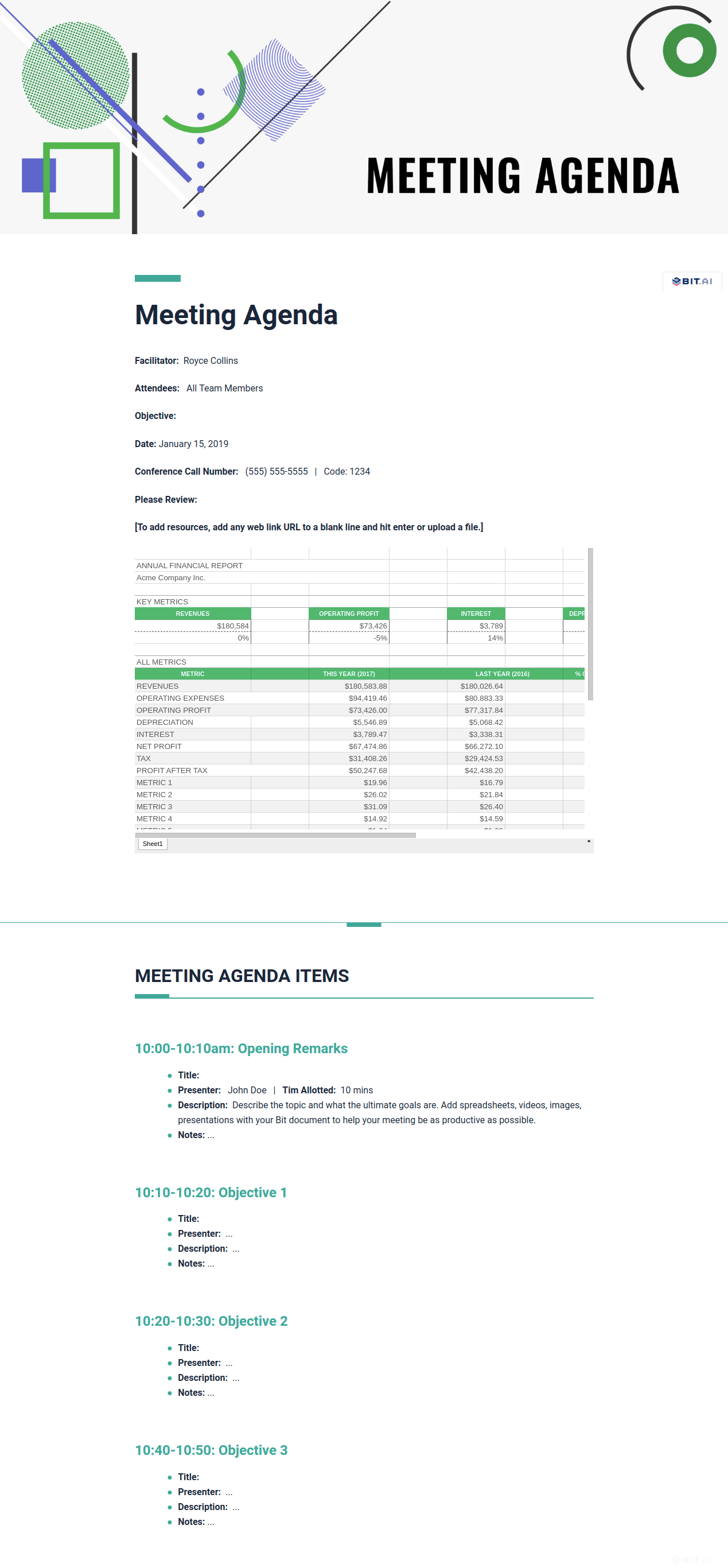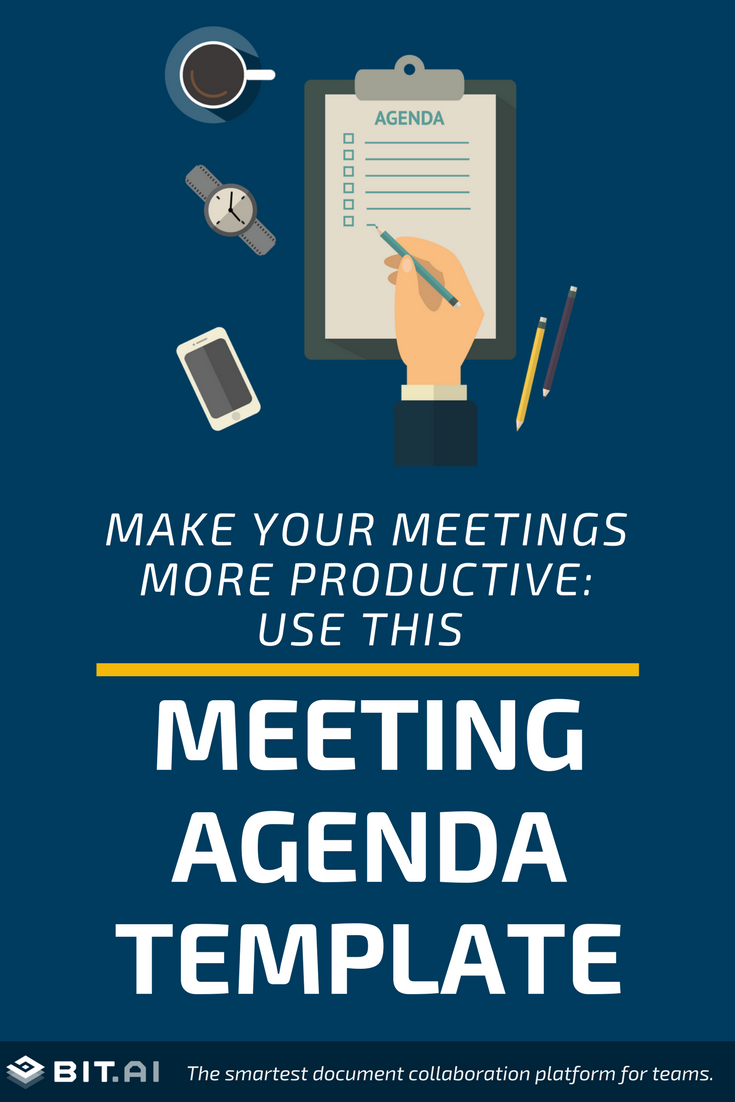Meetings play a huge role in bringing the team together and make collective decisions. However, without a properly defined meeting agenda, meetings are bound to be unproductive.
If you don’t know how to make an effective meeting agenda quickly, don’t worry. We have a free Meeting Agenda Template at the bottom of this blog post just for you. Enjoy!
How do you feel about office meetings?
Do you feel they are a good use of time and resources? Do they go according to plan? Does your organization conduct way too many meetings? Do you think they are even necessary?
Well, regardless of what you feel about meetings, they are important. Meetings play a huge role in getting the team together for collective decision-making.
They also help to ensure that every employee’s thoughts and ideas are taken into consideration and re-assures them they are a cohesive group of individuals and not a one-man/woman show.
So why are we having so many meetings and losing so much money? Why are we not good at organizing and executing an effective meeting? There are a few common occurrences in any meetings that can help answer this question:
- There are usually too many people at a meeting.
- Many people come unprepared, not knowing why they are even there.
- People are often late to meetings.
- People end up taking too much time discussing & postponing decision-making.
All these problems arise due to the simple fact that the majority of the companies lack a clearly defined meeting agenda.
What is a Meeting Agenda? (Definition)
We’ve all been to meetings that were poorly planned, poorly organized, and timed. These meetings do no good for the organization and end up wasting everybody’s crucial time.
In order to conduct an organized and effective meeting, you need a well-written meeting agenda. A meeting agenda is essentially the list of things the participants hope to achieve at a meeting.
A meeting agenda document describes what’s the meeting about, what’s the purpose of having it, lists down resources (if any) that people need to get educated on prior to the meeting, sets downtime slots for each meeting activity, describes the meeting process, and provides an overall structure to the whole meeting process.
A meeting agenda sets clear expectations for the meeting and helps your team members prepare for it ahead of time.
It helps keep the meeting on track, gives attendees ample time to allocate time for the meeting, gets people on board on the same topics quickly, and makes sure that meetings are executed in a timely fashion.
Best Practices For Meeting Agenda:
Below are some tips for designing an effective meeting agenda:
1. List the objective
One of the first things you should tackle is to determine the objective of the meeting. Do you want to set down a marketing budget for this quarter? Are you planning on introducing new software? Or you just want to share some information with your team.
Whatever, the objective is, write it down. The objective can be thought of as a very brief summary of what will be discussed in the meeting and sets the tone of the meeting.
2. List and prioritize meeting agenda items
Once you are down with the objective, list the things to be discussed in the meeting. Add the items to the meeting agenda in order of importance. This way you know which tasks to assign more time and which can be tackled quickly.
Read more: How To Write Effective Meeting Minutes?
3. The topic should affect all attendees
If you schedule a one-hour meeting with 10 attendees, it’s not really a one-hour meeting. That’s actually a ten-hour meeting, considering how all the attendees have dedicated one hour of their time to this meeting.
You thus, have to put thought while deciding who all are directly affected by the meeting and whose decisions or recommendations are absolutely important for the meeting. People are giving up productive hours of the day to be at a meeting, make sure that they are absolutely needed.
4. Seek input from team members
It’s important to seek inputs from all concerned team members prior to a meeting and encourage them to suggest meeting agenda items, and why they think these items should be addressed. If you want your employees to be engaged in meetings and pay attention, consider seeking inputs from them and address their concerns, needs, wants, and suggestions.
5. Indicate the purpose of each meeting agenda item
Do you need to vote on a decision? Or do you just want suggestions or reviews from your team members? Specify whether or not the attendees will be part of a decision-making process so that they can prepare for it beforehand.
For example, if you’ll be voting on an item, you can create a meeting agenda item like:
“Vote: Should we continue using our current document editor or try out something new?
6. Set time estimates for each meeting agenda item
Meetings often take more time than estimated, typically because people often underestimate the time needed to discuss or come to a decision.
Always set time limits for each meeting agenda item and go accordingly. Incorporate how much time will be needed to introduce the topic, have a discussion, answer questions, uncover potential solutions and settle down on a solution that everyone agrees with.
Of course, you should allow some flexibility if some topics go overboard, but try to stick to the plan as much as possible.
Allocating time slots to each meeting agenda item allows team members to suffice their arguments in shorter, quick sentences.
It also encourages feedback from attendees regarding whether or not the time allocated is sufficient for discussion and subsequently, coming to a decision.
Read more: 13 Online Meeting Apps and Software for Remote Teams!
7. Give ample preparation time to attendees
Meeting agendas should be distributed way in advance and not just hours before a meeting to encourage any fruitful discussion. Only when you give the attendees ample time to research topics, study the background material, come up with their questions and decide the pros and cons for a decision, can you expect a meeting to be effective and successful.
8. List who is responsible for leading a topic
Other than the formal meeting leader, there might be someone who is responsible to present or lead a particular topic. Mention this person next to the meeting agenda item to ensure that anyone who is responsible for leading a meeting agenda item knows it and has ample preparation time for it.
9. Meeting review
Leave time at the end of the meeting agenda for reviewing the effectiveness of the meeting and see if issues were resolved. Make sure to write down any suggestions by attendees regarding the meeting process or the meeting agenda items. This can help find out any drawbacks with your meetings and allow you to improve next time.
Read more: How To Create Reports That “Wow” Your Clients?
How To Write An Effective Meeting Agenda? Follow these Steps:
In order for your meetings to run smoothly, you need a clearly defined meeting agenda. Don’t forget to check out our free meeting agenda template that will make this process quick and easy.
These are the following things one must include in a meeting agenda:
Step 1. Title
Give your meeting agenda a simple title that describes what the meeting is about. A header or a title is very important for a better understanding of the employees.
Step 2. Overview
Include the name of the facilitator, objective of the meeting, list of attendees, meeting date, time, location, conference call number etc.
Step 3. Resources
Add any supporting resources or material that attendees need to go through prior to the meeting. These can include excel sheets, PDFs, videos, cloud files etc.
Step 4. List meeting agenda items
List down the meeting agenda items based on their priority. Assign time slots for each item to wrap up the meeting on time. This will help you process the meeting efficiently and effectively.
Step 5. Review
Once the meeting is over Leave time at the end of the meeting for questions. This helps in better internal communication within the organization.
Free Meeting Agenda Template!
If all this information is too much, no worries. We got you covered!
We, at Bit.ai, have a free meeting agenda template that will allow you to create effective meeting agendas in minutes.
 Using a Bit document to create a meeting agenda, you can:
Using a Bit document to create a meeting agenda, you can:
- Collaborate simultaneously with other team members to take everyone’s input.
- Create visually appealing and responsive documents that look great on all devices
- Embed meeting resources like PDFs, excel sheets, cloud files, audio/videos, images, etc directly in your meeting agenda document!
- Share the meeting agenda document with your team members with trackable links in no time.
🎥Watch this video to learn more👇
Now that you know the importance of creating a meeting agenda, what are you waiting for?
Take our free meeting agenda template and start creating your meeting agenda today!
If you have any suggestions for us or have any questions, feel free to comment below!
Further reads:
- 9 Best Organizational Tools To Get Rid Of Work Chaos!
15 Team Building Skills You Must Develop for Better Collaboration!
Happy & Collaborative Work Culture: 10 Effective Ways to Create it!
Project Timeline: What is it & How to Create it? (Step By Step)
- Meeting Plan: What is it & How to Create an Effective One?
- How To Write an Effective Meeting Recap with a Summary? (Steps)
[/vc_column_text]



